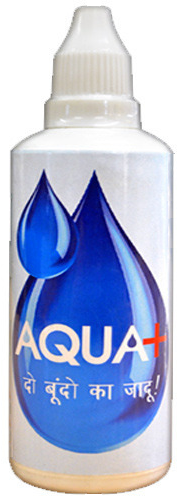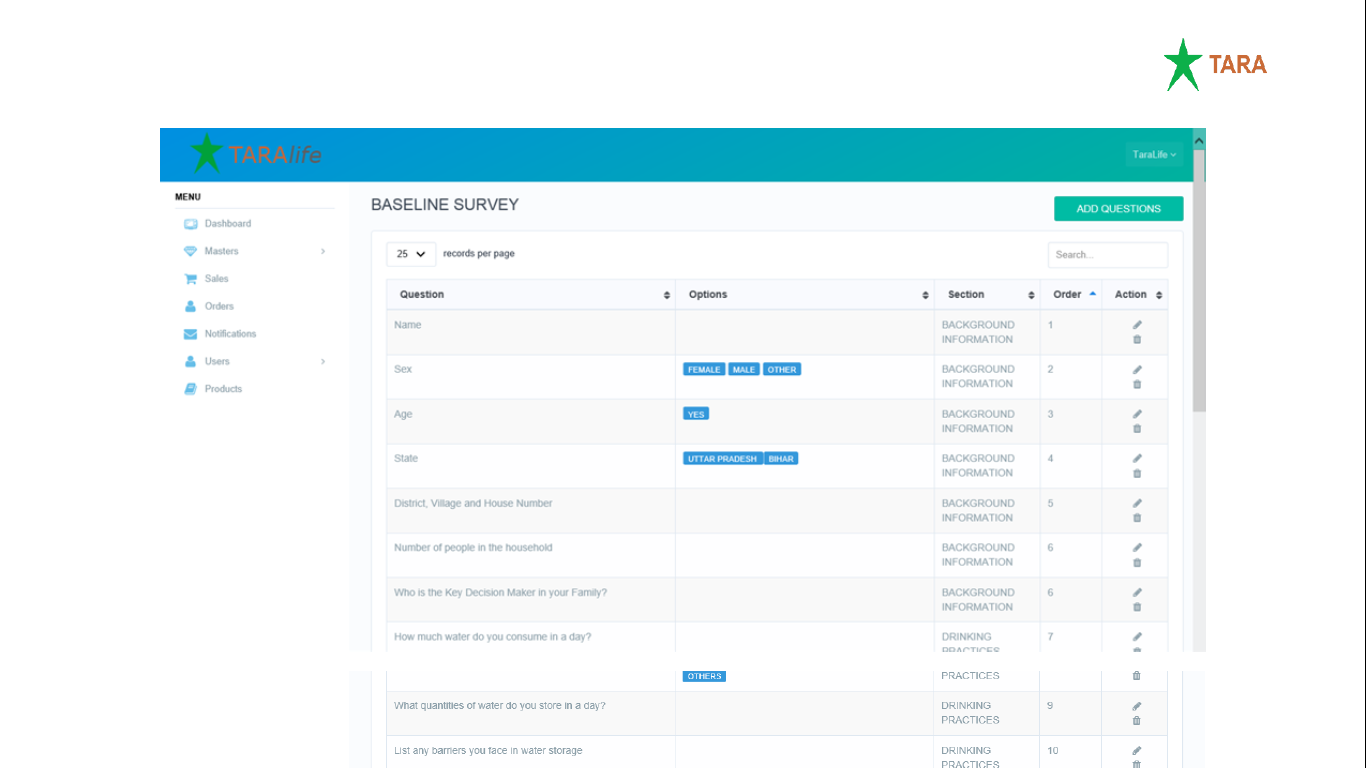This case study supports and illustrates the theoretic factsheet "Monitoring and evaluation (safe water business)" with practical insights.

chlorine
bottle.
Source:
TARA,
2016
Informal infrequent M&E
TARAlife produces and sells liquid chlorine to purify drinking water, produced with Antenna Foundation’s WATA™ technology converting salt and water with a simple electrolysis process into sodium hypochlorite (chlorine). When TARA started producing and selling chlorine branded Aqua+ (see picture) via its social enterprise TARAlife Pvt. Ltd. in 2012, TARA did not have a systematic M&E system in place to monitor sales and business activities. The head of TARAlife simply contacted each local partner by phone on an irregular basis to collect sales figures.
Paper-based
Recognising the importance of collecting customer and sales data in a more systematic way, TARA designed its first M&E system in 2013. This was a sales record booklet which included sections for customer data, sales data, and marketing materials. This system was not functioning properly, because each franchisee filled out the booklet slightly differently and the data were also not reported back to TARA headquarters consistently. This made the data from different regions and last mile agents difficult to compare. At the same time, TARA’s channel partners were having difficulties in managing their Aqua+ stocks, which was causing delayed orders and expired stocks.
Mobile app
To address both the issues of sales management as well as stock management, TARA started developing a mobile application, with support from a consultant. The app aims to make the sales reporting more user-friendly, more consistent and quicker. When developing the app, TARA realized that it could also be used to collect customer and impact-related data to assess the social, health and financial impacts of TARA's interventions. Together with IRC, the framework for the app (see figure below) was developed based on the following four objectives:
- Retain & increase database of Aqua+ customers
- Track and record impact of intervention on health/overall quality of life
- Decrease or minimise sales lost and inventory costs
- Extend the application of the system to other products than Aqua+ over the long run
The key functions of the application are the following:
- Data collected through the app by micro franchisees: details about customers, micro franchisees, customer purchasing behaviour, baseline survey of potential new customers (i.e. current water disinfection practices, existing health status, medical expenses, etc.), and product feedback from customers.
- Analysis of the data captured with the application: real-time tracking of sales and micro franchisee performance in terms of meeting sales targets.
- Implementation of the data used: send reminders to customers about purchasing TARA products and send periodic messages about safe water awareness.
- Conduct an impact assessment survey (post intervention survey after 6 months of purchase).

The development of the mobile application is completed and it is about to enter the pilot test phase with micro franchisees at TARA Akshar locations in the state of Eastern Uttar Pradesh, India. The results from the pilot test are expected by 2018.
- Paper-based M&E has the advantage that surveys do not need to have access to a source of electricity, which can be advantageous in non-electrified rural areas.
- Paper-based M&E is more time-consuming as to get a clear overview and statistics data has to be fed into computers. During such process mistakes can occur and falsify data.
- The launch of the app-based M&E brings different advantages along: Data is now homogenously compiled and can soundly be tracked back to microfranchisees. It easily allows to make comparisons between regions, products and salespeople on a daily basis.
- App-based M&E allows to be adapted to a variety of products and can be duplicated when necessary.
- App-based M&E improve attractiveness of a safe water initiative or safe water enterprise for investments as impact is soundly collected and can be easily presented and accessed externally also.
- Developing and integrating app-based M&E is time-consuming and has its costs that have to be taken into account when reflecting on starting such project in your safe water initiative.
- In a long-term perspective is the use of app-based M&E inevitable as tendencies are in place of donors and impact investors to have sound track access to data and this if possible on a daily basis.


